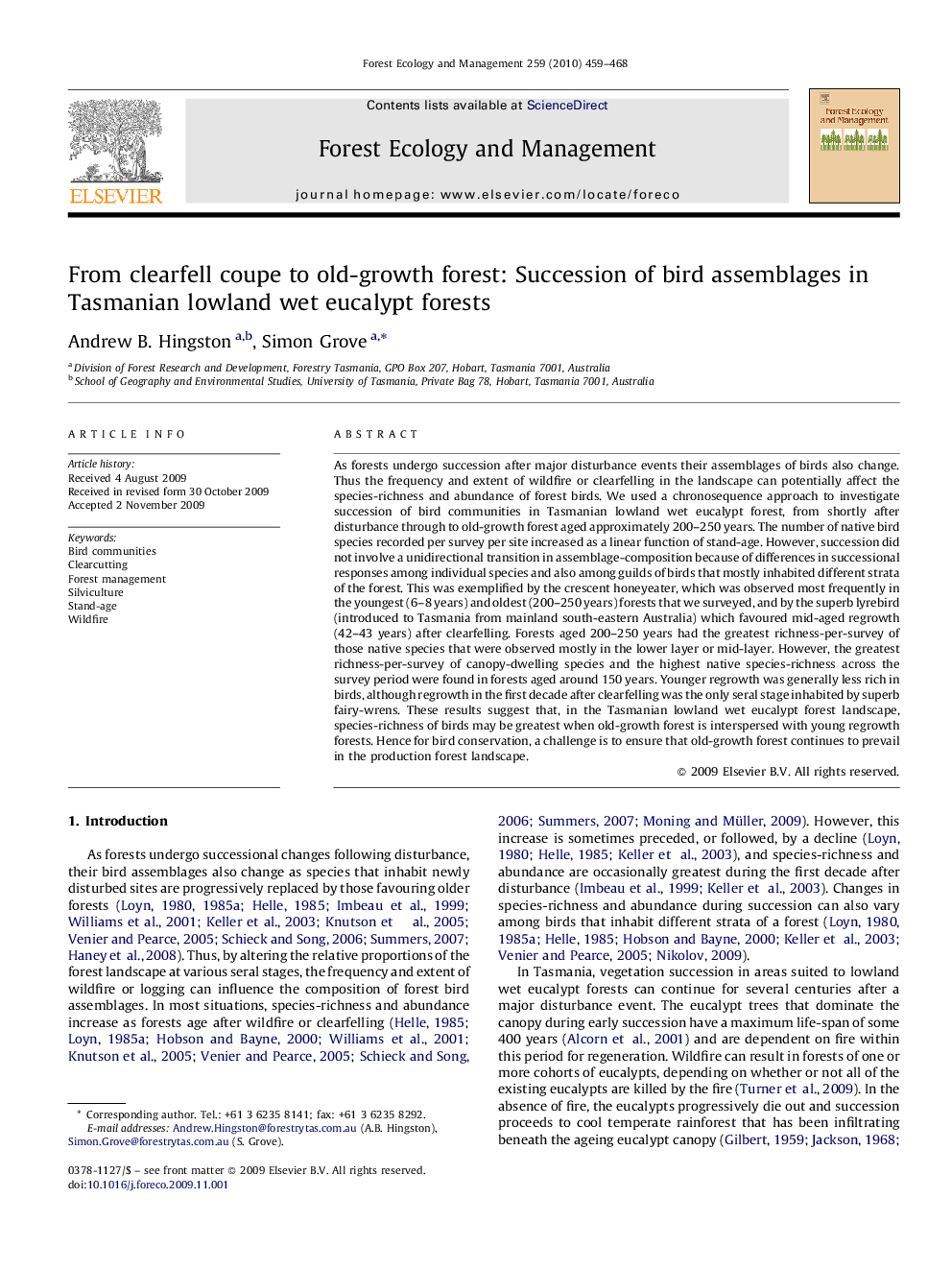| کد مقاله | کد نشریه | سال انتشار | مقاله انگلیسی | نسخه تمام متن |
|---|---|---|---|---|
| 10250580 | 159322 | 2010 | 10 صفحه PDF | دانلود رایگان |
عنوان انگلیسی مقاله ISI
From clearfell coupe to old-growth forest: Succession of bird assemblages in Tasmanian lowland wet eucalypt forests
دانلود مقاله + سفارش ترجمه
دانلود مقاله ISI انگلیسی
رایگان برای ایرانیان
کلمات کلیدی
موضوعات مرتبط
علوم زیستی و بیوفناوری
علوم کشاورزی و بیولوژیک
بوم شناسی، تکامل، رفتار و سامانه شناسی
پیش نمایش صفحه اول مقاله

چکیده انگلیسی
As forests undergo succession after major disturbance events their assemblages of birds also change. Thus the frequency and extent of wildfire or clearfelling in the landscape can potentially affect the species-richness and abundance of forest birds. We used a chronosequence approach to investigate succession of bird communities in Tasmanian lowland wet eucalypt forest, from shortly after disturbance through to old-growth forest aged approximately 200-250 years. The number of native bird species recorded per survey per site increased as a linear function of stand-age. However, succession did not involve a unidirectional transition in assemblage-composition because of differences in successional responses among individual species and also among guilds of birds that mostly inhabited different strata of the forest. This was exemplified by the crescent honeyeater, which was observed most frequently in the youngest (6-8 years) and oldest (200-250 years) forests that we surveyed, and by the superb lyrebird (introduced to Tasmania from mainland south-eastern Australia) which favoured mid-aged regrowth (42-43 years) after clearfelling. Forests aged 200-250 years had the greatest richness-per-survey of those native species that were observed mostly in the lower layer or mid-layer. However, the greatest richness-per-survey of canopy-dwelling species and the highest native species-richness across the survey period were found in forests aged around 150 years. Younger regrowth was generally less rich in birds, although regrowth in the first decade after clearfelling was the only seral stage inhabited by superb fairy-wrens. These results suggest that, in the Tasmanian lowland wet eucalypt forest landscape, species-richness of birds may be greatest when old-growth forest is interspersed with young regrowth forests. Hence for bird conservation, a challenge is to ensure that old-growth forest continues to prevail in the production forest landscape.
ناشر
Database: Elsevier - ScienceDirect (ساینس دایرکت)
Journal: Forest Ecology and Management - Volume 259, Issue 3, 25 January 2010, Pages 459-468
Journal: Forest Ecology and Management - Volume 259, Issue 3, 25 January 2010, Pages 459-468
نویسندگان
Andrew B. Hingston, Simon Grove,